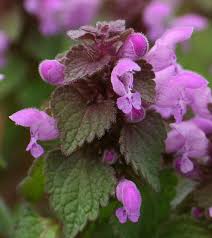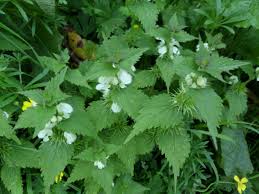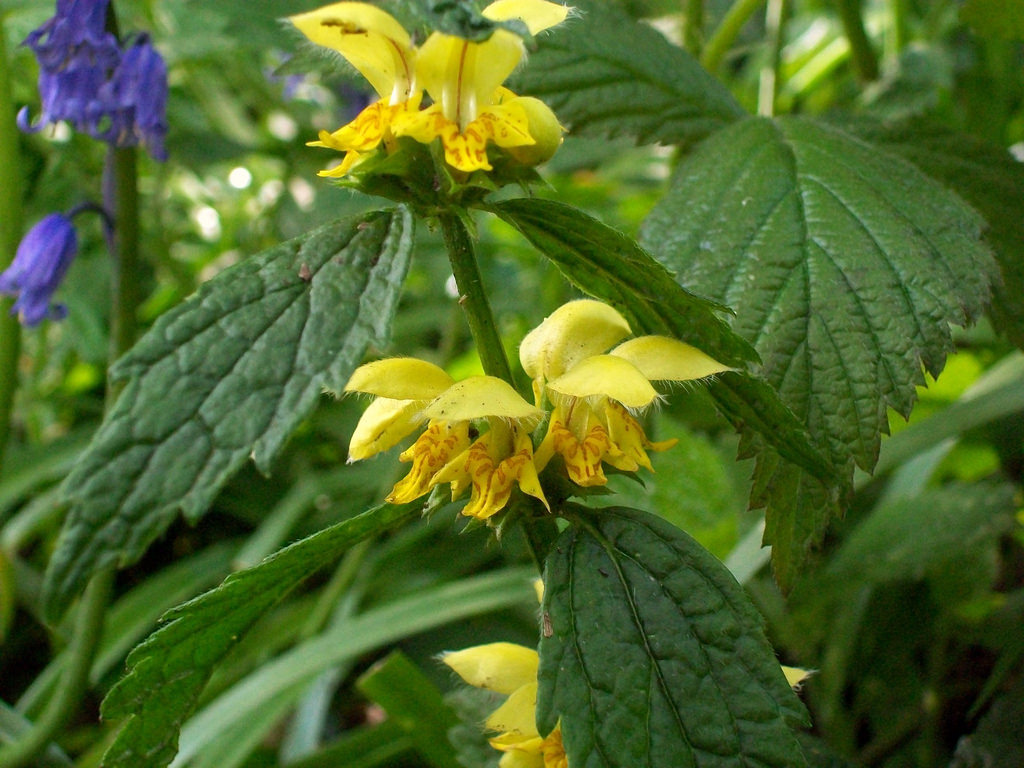|
Red archangel (Lamium purpurea) White archangel ( L.album) Yellow archangel ( Lamiastrum galeobdolon)
Dead nettles or Archangel (Lamiums) Common Name: Red Dead nettle Latin : Lamium purpureum Family: Lamiaceae History and/or use: Nutritious salad and an uplifting tea. Wildlife Value: Nectar providing plant for long-tongued insects and food for caterpillars. Qualities of Dead Nettle Through sun and rain, the country lane, The field, the road, are my abode. Though leaf and bud be splashed with mud, Who cares? Not I!—I see the sky, The kindly sun, the wayside fun Of tramping folk who smoke and joke, The bairns who heed my dusty weed (No sting have I to make them cry), And truth to tell, they love me well. My brothers, White, and Yellow bright, Are finer chaps than I, perhaps; Who cares? Not I! So now good-bye. Cicely Mary Barker The Lamiums are a delightful selection of plants often known as dead nettles as their leaves resemble the nettle but have no sting. I prefer the name archangel which seems more deserving and refers to the fact they are still in flower on Michaelmas day ( 29th September). The red dead nettle as the above poem so aptly describes is like a cheerful peasant growing on cultivated and waste grounds amongst the dust and mud with its delightful 2-lipped hooded flowers that invite the long-tongued insects in for a sip of nectar. These winged bundles of joy will find this nectar supply as early as February and include the bumble and red mason bees. Its leaves provide food for the white ermine, angle shades and garden tiger moths. The taller white dead nettle looks more stately with larger more prominent white flowers which also support much wildlife such as bees and moths and the small Green tortoise beetle which hides its legs and antennae under its body when threatened. This beetle seems to like the dead nettle family also feeding on woundworts and water mints. The yellow species ( considered less herbal although can be used) tends to grow on heavy spoils of wood and hedgerow and differs from the others with its more robust aerial shoots. The white species is not seen in more natural habitats and seems to crop up around areas which were early Norman settlements so may well have been introduced as food. If you have any medical conditions please check with a medical herbalist first before taking any plant and only harvest it if you are 100% sure what it is! The red and white can both be added to salads or cooked as a vegetable, they were both once eaten by humans and prepared as pig food. As a tea the plant is uplifting and as a healer can aid green wounds, ulcers, bruises, burns and ‘draweth’ splinters. It has also been said it can be used magically to protect cattle and as a guardian against black magic and evil spirits. If you would like to support our work and go even more deeply into Nature Connection please become a member and have exclusive access to our online course.
1 Comment
|
Details
Poetry of flowersJoin me to explore the flora of the British Isles on this blog. My intention is to attempt to capture the unique quality and beauty of each species of flower, tree or shrub. For every species featured I will be growing many more wildflowers to celebrate the joy of their existence, their intrinsic conservation value and bewildering array of uses. For nearly 30 years I have noted, studied and explored wildflowers in the field much to the patience of the walker beside me. To share this passion is a heartfelt plea to respect, preserve and care for all British Wildflowers no matter how common they seem. Archives
February 2024
Categories |




 RSS Feed
RSS Feed
